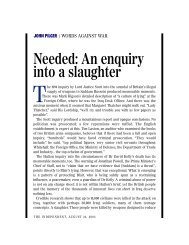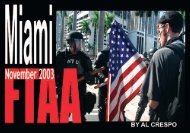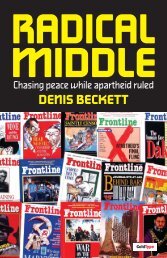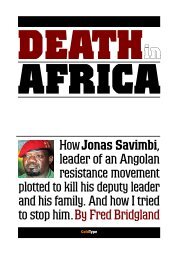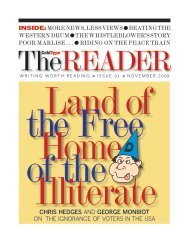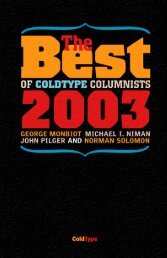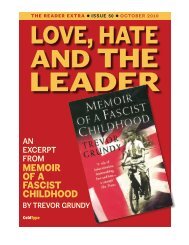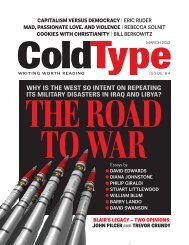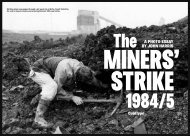UPDATED - ColdType
UPDATED - ColdType
UPDATED - ColdType
- TAGS
- updated
- coldtype
- coldtype.net
Create successful ePaper yourself
Turn your PDF publications into a flip-book with our unique Google optimized e-Paper software.
EMBEDDED: WEAPONS OF MASS DECEPTION<br />
Patriotism Police hunt you down.” Fear of being<br />
so hunted led broadcasters to do some hunting<br />
of their own, perhaps to keep any potential critics<br />
at bay. In the unbrave world of broadcasting,<br />
Sorenson fired Peter Arnett for the crime of saying<br />
on Iraqi TVwhat he had been saying on<br />
MSNBC.<br />
When MSNBC correspondent Ashleigh Banfield<br />
publicly criticized some of the war coverage<br />
as “sanitized,” she was “taken to the wood shed”<br />
and chastised publicly by her bosses. This intolerance<br />
towards dissent in the ranks sent an<br />
unmistakable message to any others who might<br />
raise similar questions. (It is still not clear if her<br />
contract will be renewed.)<br />
Was it just fear and intimidation that led so<br />
many in the media to become willing boosters of<br />
the “coalition of the willing?” Why was the<br />
prospect of war constantly projected as<br />
inevitable, and then widely accepted, even<br />
eagerly anticipated, as “the next big thing?” It<br />
seems clear that large sectors of the media were<br />
not duped but rather complicit, even enthusiastic<br />
flag-waving partners with the military<br />
THE SEDUCTIONS OF EMBEDDING<br />
THE embedding program helped breach the wall<br />
between the media and the military, between<br />
subject and reporter. Few investigated the origins<br />
and financing of this program. Thanks to<br />
Milwaukee Magazine, we now know why:<br />
“Who paid for this media training, transportation<br />
and equipment? Unwittingly, American taxpayers<br />
picked up the tab for these and many<br />
other expenses in the military’s embedded<br />
media program.<br />
“That’s one way of looking at it,” concedes Maj.<br />
244<br />
Tim Blair, Pentagon officer in charge of the program.<br />
Another way of looking at it is the embedded<br />
media, by accepting military handouts at<br />
taxpayer expense, betrayed the public’s trust<br />
and venerable journalism policies against freebies.”<br />
WHAT IT SOUNDED LIKE<br />
CARTOONIST Aaron McGruder captured the frequent<br />
flavor of the exchange between studio and<br />
journalist in one of his Boondocks strips. His<br />
principal character, Huey Freeman, is watching<br />
the tube:<br />
“I’m Aaron Brown, this is CNN. We’re talking<br />
to one of our brave correspondents in Iraq.<br />
Hello?<br />
“Hey, Aaron” is the response.<br />
“You are so brave to be out there.<br />
“Thanks Aaron, I am brave but our troops are<br />
braver.<br />
“Yes our troops are brave. But you are very<br />
brave as well.<br />
“Yes Aaron, there is a lot of bravery here.”<br />
“There sure is a lot of Bravery – IN YOU, my<br />
friend.<br />
“ . . . And that’s it. From Iraq, back to you<br />
Aaron.”<br />
This invented exchange captures a psychic<br />
subtext of self-promotion and mission identification.<br />
For many covering the war, the task clearly<br />
had a personal dimension, the sense journalists<br />
crave of doing something important, and being<br />
part of history. In years past, this type of satisfaction<br />
came from crusading, muckraking,<br />
‘speaking truth to power.’ Today, it seems to<br />
come from serving power and its many servants.



